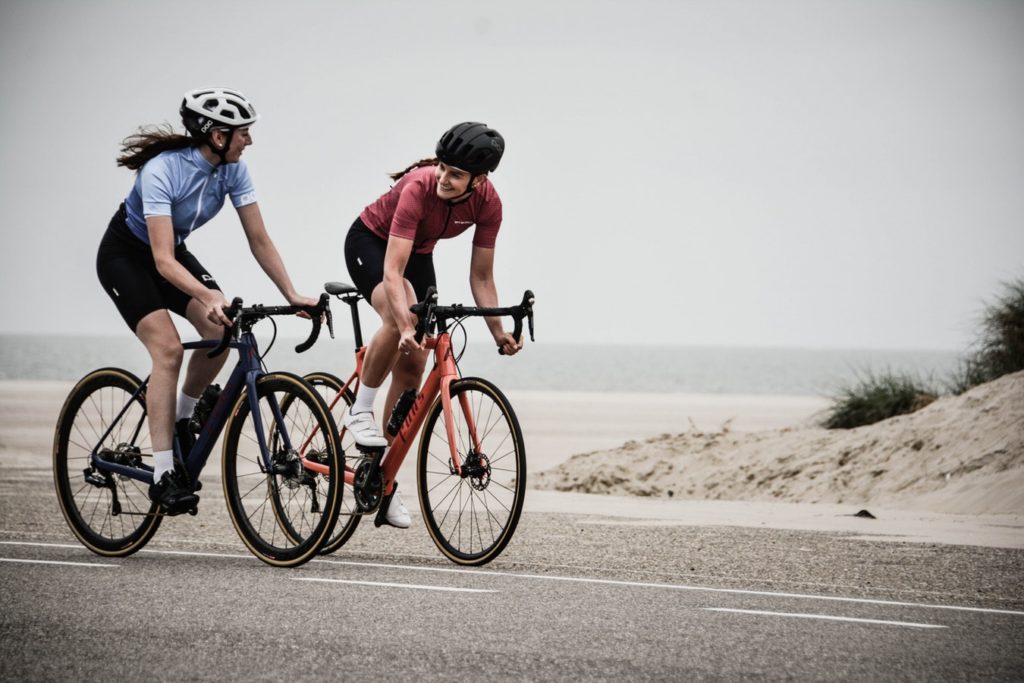With great weather forecast for this weekend, lots of people will be out on their bikes. With temperatures in the UK expected to hit the mid twenties (centigrade) it’s certainly hot enough for you to think about taking precautions from the heat.
It’s crucial not to underestimate the effect high temperatures can have on your cycling. Although we’re not travelling much at the moment, hopefully we will be able to ride our bikes on the continent again soon as well. The average daily high in Mallorca last July was 34 degrees centigrade, and areas such as Andalucia in the South of Spain saw 39 degrees most days.
We look at how higher temperatures can effect your performance, the early warning signs of heat exhaustion, and how to keep yourself safe cycling in hot weather.

Heat and Heart Rate
Sports Physiologist Dr Garry Palmer spoke to us about the impact of temperature on our body’s ability to do work, and how this affects heart rate.
His experiment looked at the effects of cooling while using an indoor trainer, but the results can be applied to a hot climate too, particularly while climbing when you don’t have the cooling effect of speed.
As the temperature rises, your body begins sending more blood towards the surface of your skin to aid cooling. If you are exercising at the same time, your heart needs to work harder to continue supplying your muscles with blood. This all leads to ‘greater cardiac stress’, and if there is one thing we can all agree on, the higher your heart rate goes, the more it hurts.
The solution? A sensible person would tell you to slow down.
Dehydration
As hard as you try to prevent it, higher temperatures are going to dehydrate you more quickly than you can take that water back on. As little as 1% dehydration can impair your performance by as much as 5%, and sodium lost through sweat can be linked to muscle cramping during exercise.
You are going to start sweating the moment you leave your fancy air-conditioned hotel room, and as you continue throughout your ride, it’s going to get more and more difficult to maintain your pace. When riding in hot climates, it’s particularly important to drink enough water and sodium to offset dehydration as much as possible.
One top tip is to take two large bidons; one from the tap, and one out of the freezer. By the time the first bottle is empty, the second will be thawed meaning you have cool water the whole way round your ride.
Sunburn
It’s stating the obvious really, but the only thing more ridiculous than a cyclist’s tan lines is the outline of bibshorts and jersey in your crippling sunburn. Make sure you have a little tube of suncream in your saddlebag or back pocket, and top up as you go.
Heat Exhaustion
We’re getting a little more serious now; heat exhaustion will seriously spoil your day if not your week.
If you aren’t replacing your fluids quickly enough, dehydration can lead to a decrease in blood pressure and blood volume. The symptoms include extreme tiredness, dizziness and nausea. It’s incredibly important to keep toped up with fluids and make a stop if you start to feel the signs of heat exhaustion, because if you leave it to long, you could find yourself facing…
Heatstroke
Your body is no longer able to cool itself, and your body temperature becomes dangerously high. In other words, you should already be on your way to hospital. Make sure everyone in the group you’re riding with recognises the signs of heat exhaustion and heatstroke, and if riding alone, make sure you have someone to call if you get into trouble.
For more information on heat exhaustion and heatstroke, you can check out the NHS website.
Ultimately, as well as keeping topped up with water and sun cream, the best advice is not to go too hard.
I know it’s a bit like your mum telling you to wear a scarf when it’s cold, but you need to adapt your riding to your environment. Some of the newer bike computers now have thermometers which will add temperature data to Strava for you, and there has been a recent explosion in wearable tech that will help you track your core body temperatures or electrolyte levels. You’ll have bragging rights even if it was a slow burn when your friends notice you completed your climb at 35°C.